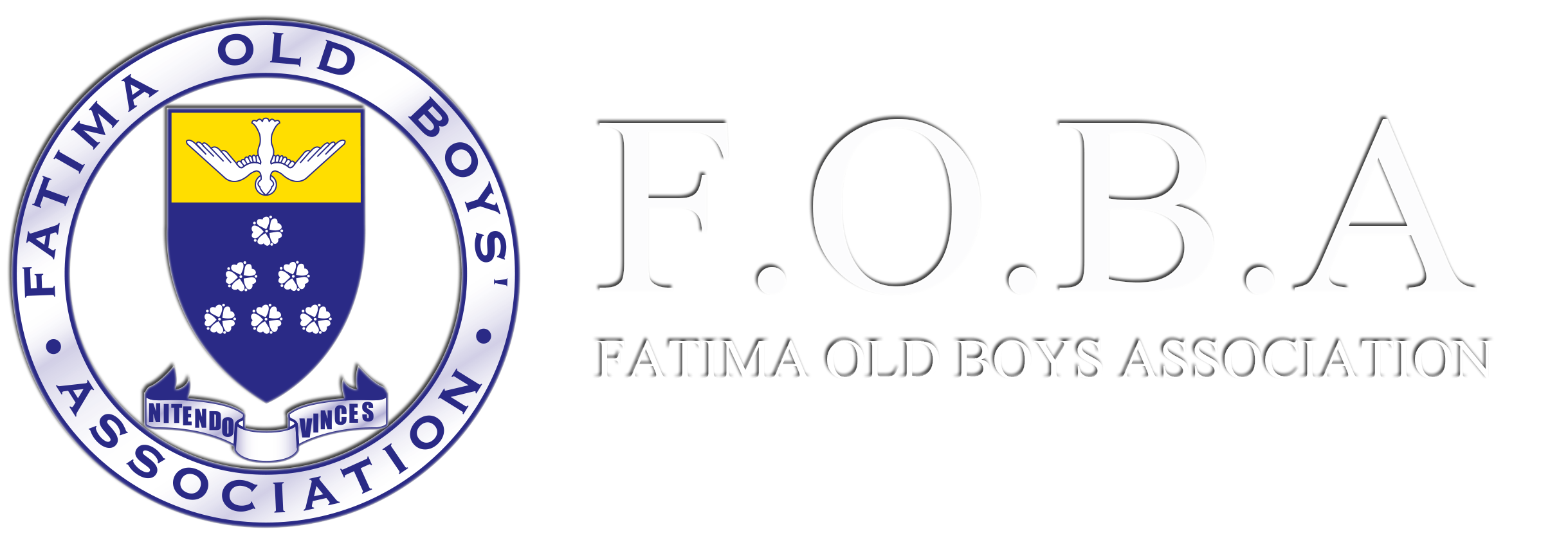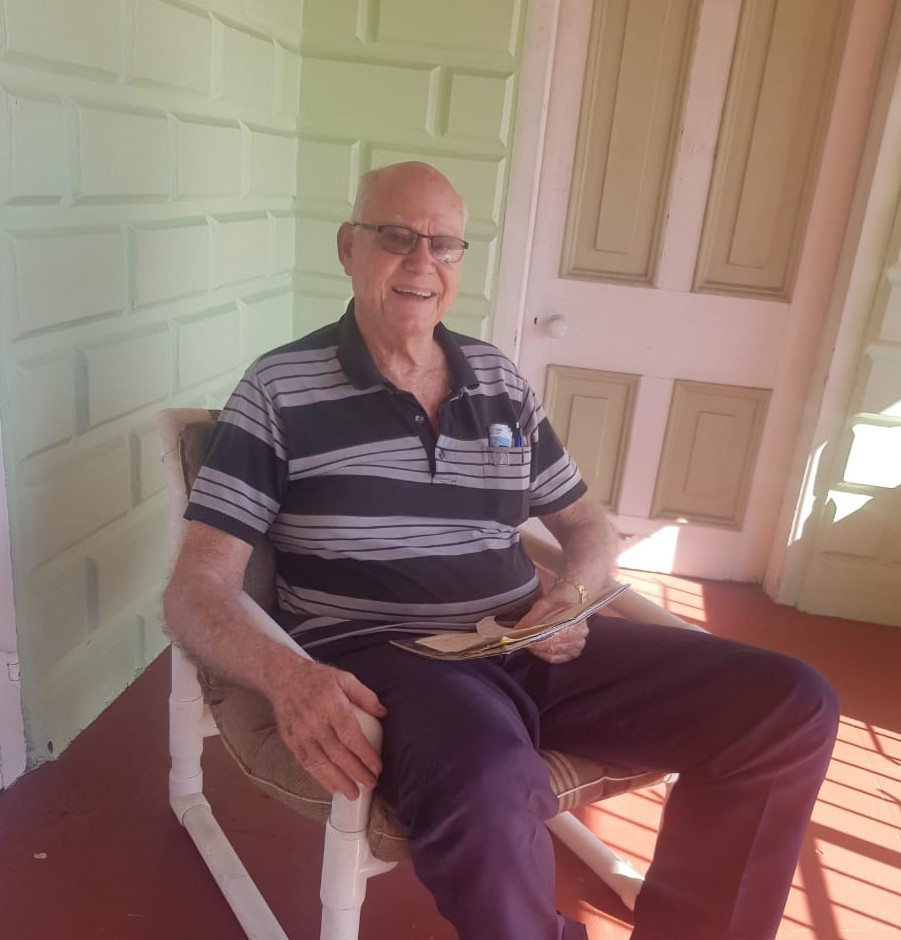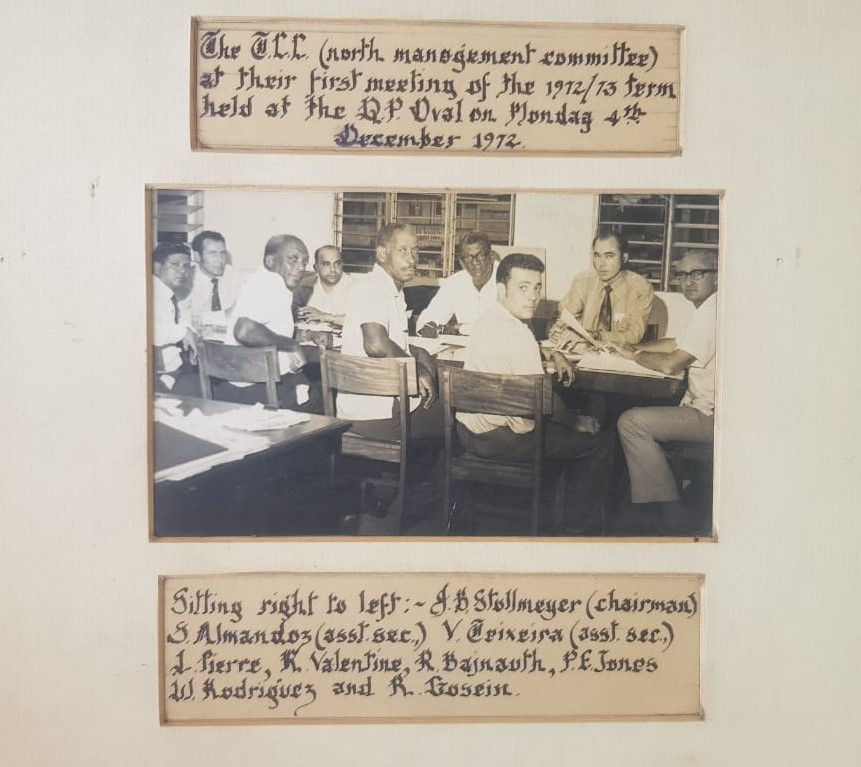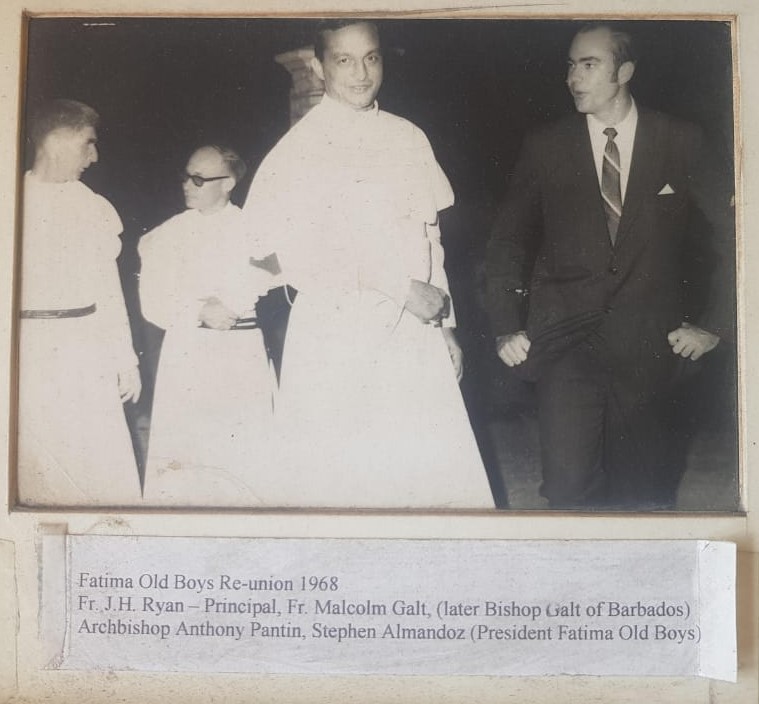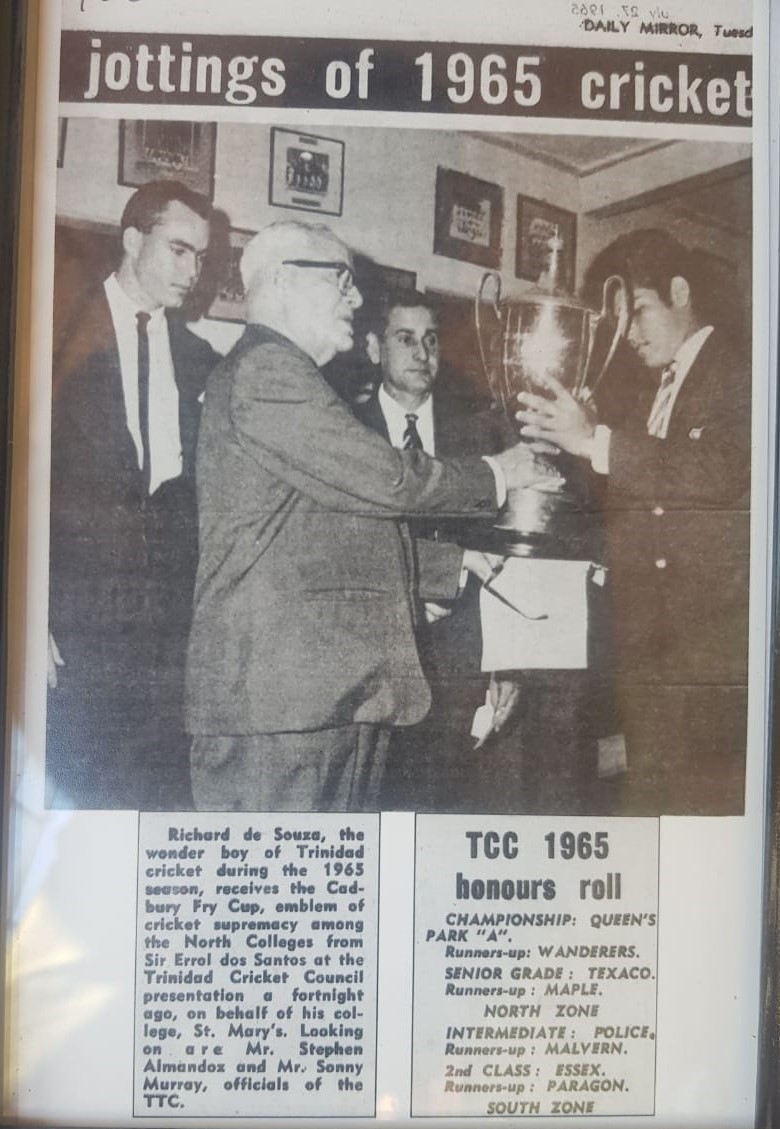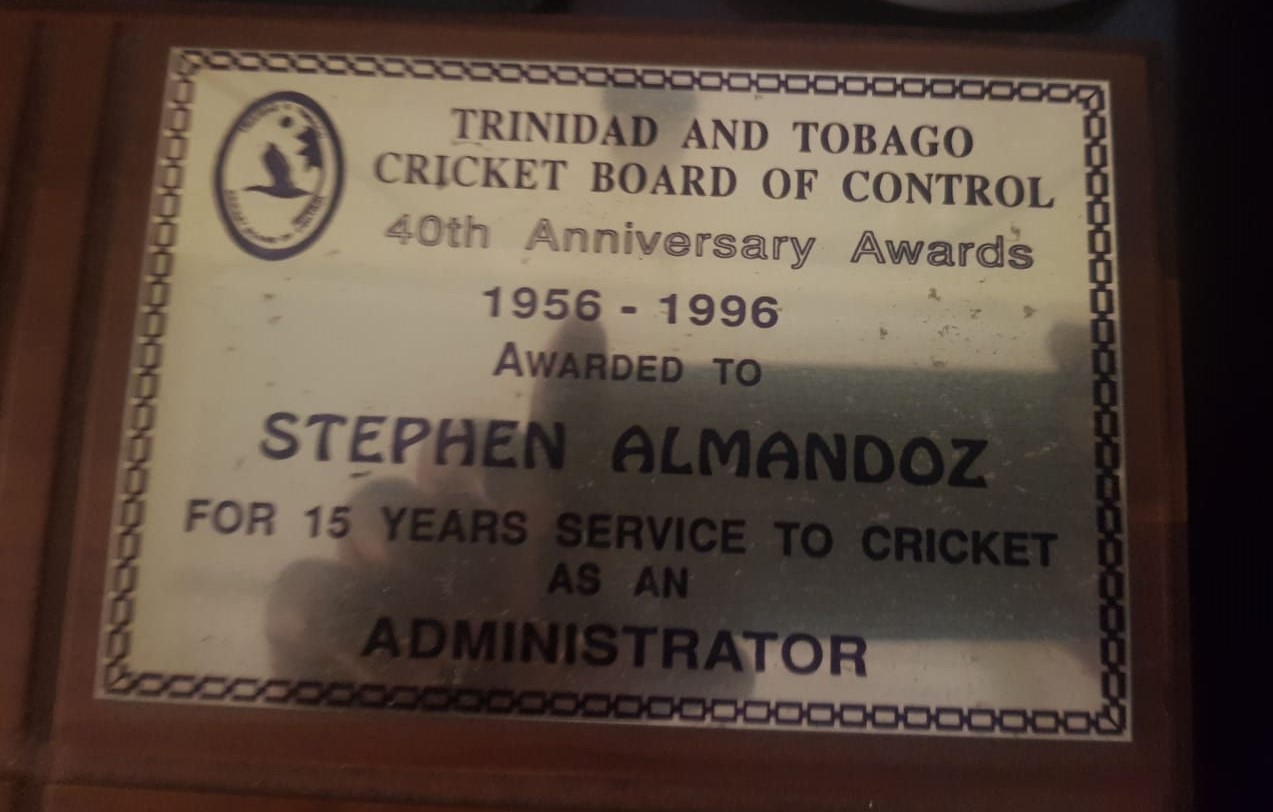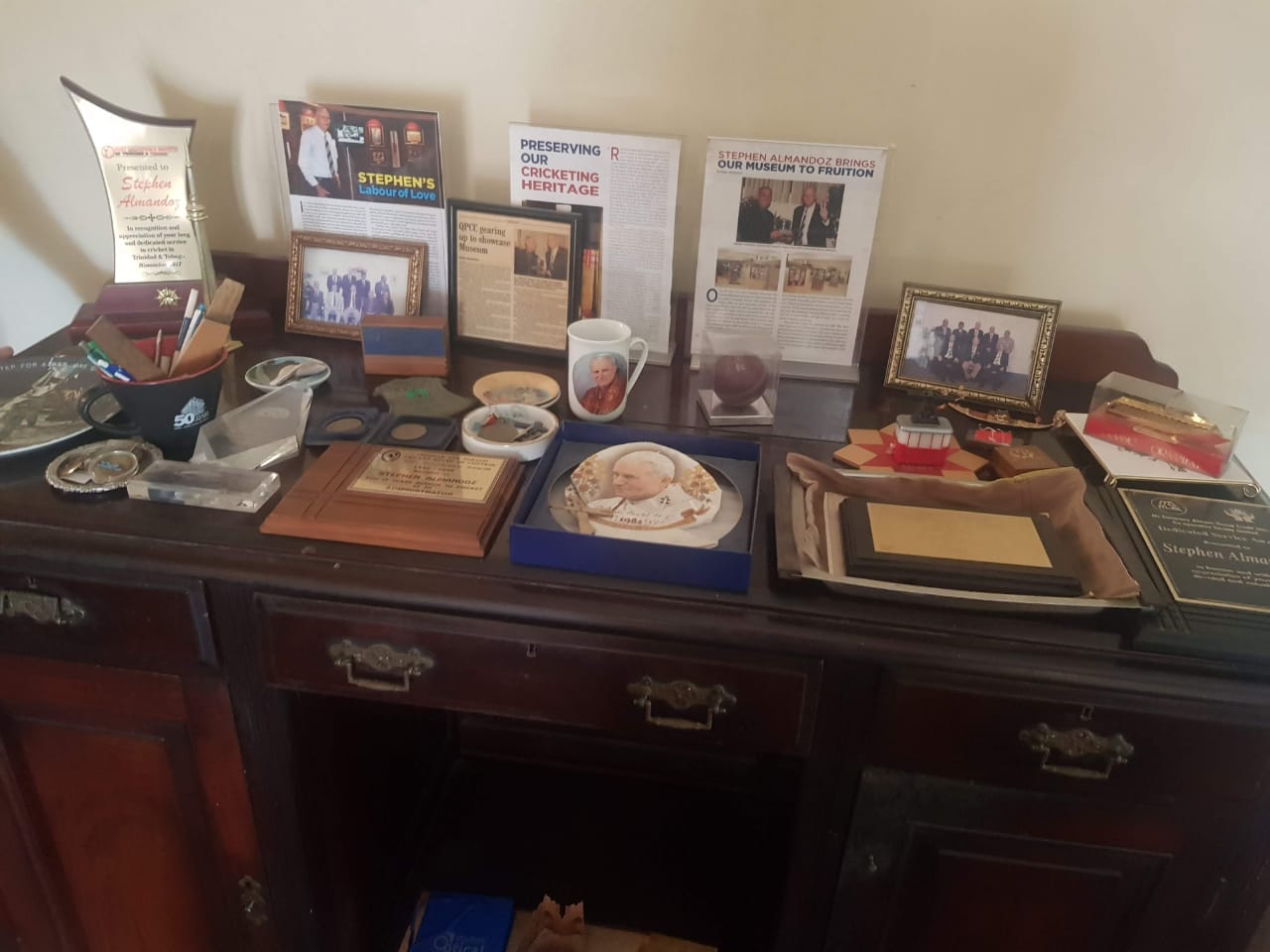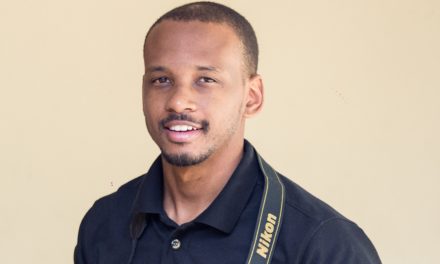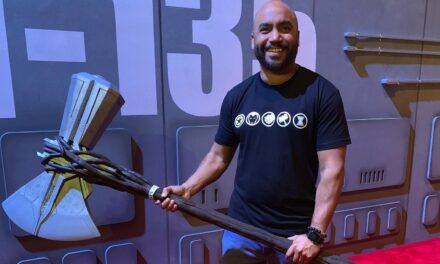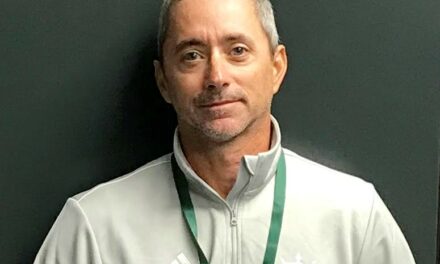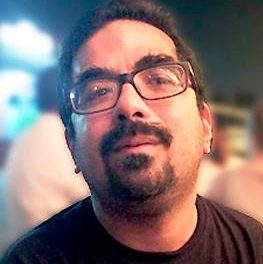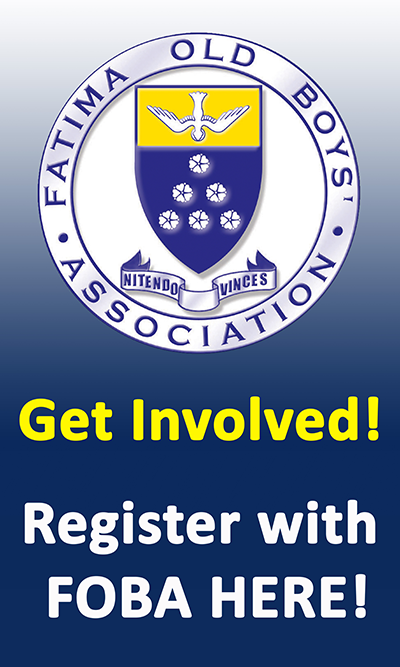- Views 0
- Likes 0
by Lance Busby
Stephen Almandoz gracefully acceded to my request to interview him on his experiences as the Fatima Old Boys’ Association’s second President. We met at his home and had a lively discussion for several hours. He described with pride his participation in national events and school activities, and provided insight into his work with the College.
He turned out to be quite an historian. He has a keen appreciation for timelines and the impact of events on the institution, and respects the Fatima established brand. He recalls that prior to Fatima’s establishment at Mucurapo Road in 1945, the newborn school existed in a structure behind St. Theresa’s Convent on Warren Street. Stephen attended Fatima from 1956 to 1961.
He recalls attending with pride what was then the third most prestigious boys’ College in the country. St Mary’s had been in existence since 1863 and QRC since 1859—both more than some 80 years older than Fatima. At the time of Stephen’s matriculation, Fatima was beginning to catch up with its older rivals. With a sense and energy of the New Age (forties, fifties, sixties), Fatima boys all interacted with each other and treated each other with respect despite their disparate backgrounds. They all came together on the football-field, cricket-field and tennis-court.
He mentioned that football and cricket were played in the then ‘cow pasture’ opposite the College. A common pitfall was stepping into cow paddies during play! Other challenges because of the lack of storage for gear and changing facilities for players would later be addressed by the yet to be formed alumni association, F.O.B.A.
The tennis-court during his tenure was marked out where the parking-lot near the quad now is.
Bicycles were the major form of transportation, with Fatima’s bike-rack located to the rear of the compound. He recalled the day that the first automobile was driven into the school. It was a Ford Prefect just purchased in 1961 by teacher Mr. Edgar Sosa. Activity stopped for the rest of the day as everyone came out of classes to examine the car.
He treasures his years at Fatima, and those after during which her served with pride to improve the outlook and standings of our great institution.
Q. What years did you attend Fatima?
A. 1956 to 1961. I did not opt to continue on to complete A’ Levels at St. Mary’s but instead went straight into a job at Alston’s.
Q. Describe the culture of the school in your time.
A. It was one in which attending Fatima was graced with a sense of special pride given the fact that Fatima was considered at that time to be the third most prestigious College after St. Mary’s and QRC. Pride also came from the fact that the majority of the teachers and administration were qualified Irish clergy.
The boys all interacted and treated each other with respect regardless of their diverse backgrounds, and many lifelong friendships were forged.
Q. Which part of your time at Fatima brings back the fondest and/or least fondest memories?
A. My fondest memories include Captaining of the 1960 Inter-Collegiate cricket team, and landing membership in the school’s Cadet Force and Sea Scouts troop. My least fond moment was having to leave the school to establish a work career.
Q. How long were you on the FOBA committee before you ran for President? Did you hold any positions/Offices prior to being President?
A. I was a member of the association since its inception in 1966. I was happy to serve as Secretary and then Vice-President. When the term of the first President of FOBA came to an end, I was made president in 1968.
Q. What made you decide to run for FOBA President?
A. Dereck Johnson, F.O.B.A.’s first President, having established the Association in 1966, was about to demit office. The task of providing continuity fell upon the Vice-President, and so the baton was passed to me.
Q. What years were you FOBA President?
A. 1968 to 1972.
Q. What was your vision for FOBA while you were at the helm?
A. I was determined to support the College, its faculty and its students by not only increasing the fund-raising required to make improvements, but by increasing our membership.
Unbelievably, in 1978 almost 13 years after its founding, the Association’s listed membership stood only at 200. I embarked on a program of letter-writing to reach out to past students. This brought us significant gains in both fund-raising and membership enrolment.
Q. What was the most challenging aspect of being President of FOBA during your tenure?
A. Communication was the most challenging aspect. Such a task was constrained by the technology of the day (or lack thereof). All communication took the form of letter-writing by hand and delivery was done through the postal services or by personal delivery.
A. What were you most proud of during your tenure as President?
A. The establishment of a Fatima College Newsletter to communicate about school events and fund-raising activities. This Newsletter pre-dated the AMITAF publication which followed later and was a source of pride.
Q. Is there anything they would have liked to do during their presidency that they didn’t get a chance to do?
A. During my tenure there was a desire to develop the sporting facilities. I wanted to build what is now known as the pavilion. It would not only offer a place to watch matches but facilities (other than a shed) for the players to change, as well as a secure place to store the matting for the cricket-pitch. The pavilion was later designed and build by Fr. Farfan and Clive Pantin.
I also would have liked to have completed a project that would have extended the Assembly Hall toward the river. This feat was deemed to have been difficult because of the physical restrictions given the proximity to the river running at the east of the property.
Q. How has the experience of being FOBA President influenced you?
A. My leadership experience was extremely hands-on. I was never averse to delegation but preferred to ‘own’ many of the Association’s processes. As such, I accumulated a vast degree of expertise in organising events and committees––an experience that served me throughout my career. My tenure as President led to many friendships that exist to the present.
Q. If all your teachers were still there, who would you check first on visiting Fatima today?
A. I remember each and every priest and teacher, and their roles and influence on my life! If Mr. Clive Pantin was still with us he would be my first choice. He and I founded the Westhall Youth League, with sponsorship from WITCO, to serve students from 1968-1974.
Q. Have you been able to maintain friendships with your classmates since school?
A. Yes, I have maintained several friendships with many classmates. Some because of my work with the Association, and others because of my Cricket Club activities.
Q. What do you feel about Fatima and FOBA today and how they’ve progressed?
A. I must admit that I have lost track of current Association activities. Unlike many of my vintage, I prefer traditional methods of communicating, as opposed to using digital and social media. I refrain from email and instant messaging. So I get little information, other than from publications that are given to me.
Q. If you were elected President of FOBA tomorrow, what would be your 1st order of business?
A. I would still like to extend the Assembly Hall, and to enhance the school’s facilities as much as possible. It is a source of pride to all of us.
Q. Any hobbies? How do you spend your free time?
A. I’m dealing with a few challenges and have not been able to engage in sports or hobbies for quite some time.
Q. Any closing remarks?
A. I would wish to encourage the current Board to approach corporate entities continuously for sponsorship in exchange for advertising. This will be to the benefit of the school’s sports programmes and academics. I would discourage the use of the ‘plastic advertising banners’ at the front of the College.
